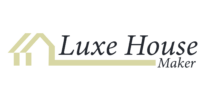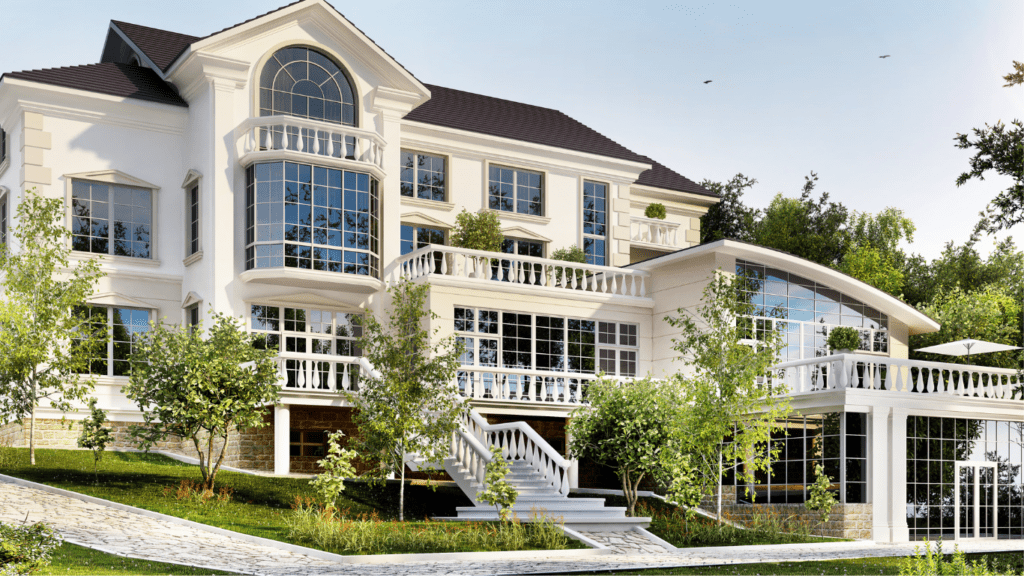Understanding The Luxury Real Estate Market
Luxury real estate, distinct for its high value and unique attributes, targets high-net-worth individuals (HNWIs). Properties in this segment often feature prime locations, superior materials, and exceptional design. Cities like New York, London, and Hong Kong are known for their flourishing luxury markets, offering everything from penthouses to sprawling estates.
Trends in the luxury sector show that buyers prioritize exclusivity. Unique architectural styles, private amenities (e.g., cinemas, spas), and personalized services (e.g., concierge, security) matter significantly. Additionally, sustainability has gained relevance, with eco-friendly features (e.g., solar panels, green roofs) becoming more common.
Economic stability plays a critical role in this market. A strong economy boosts buyer confidence, driving demand for high-end properties. Conversely, economic downturns can cause caution, slowing market activity. Notably, interest rates influence luxury real estate transactions; lower rates often lead to increased purchasing activity among HNWIs.
Technological advancements also reshape the luxury market. Smart homes with integrated systems (e.g., AI, IoT) attract tech-savvy buyers. Virtual reality (VR) tours and blockchain-based transactions improve the buying experience by enhancing transparency and reducing transaction times.
Global factors, such as political stability and regulatory environments, affect luxury real estate. Favorable tax policies and political climates can attract international buyers, driving up property values. Conversely, restrictive regulations or political uncertainty can deter investment.
Understanding buyer preferences is essential. Modern luxury homebuyers seek a blend of comfort, style, and functionality. Open floor plans, high ceilings, and abundant natural light are highly desired. Outdoor spaces, such as terraces and gardens, also enhance property appeal.
The luxury real estate market thrives on exclusivity, economic stability, technological innovation, and understanding buyer preferences. By analyzing these factors, one can gain insights into market dynamics and make informed investment decisions.
Current Market Trends
Key trends are shaping the luxury real estate market, with urban demand and smart home integration at the forefront.
High Demand in Urban Areas
Urban areas show high demand for luxury real estate, particularly in cities like New York, London, and Hong Kong. These cities offer prime locations and unparalleled amenities. In New York, luxury apartment sales increased by 15% in 2022, while London saw a 10% rise in high-end property transactions.
High-net-worth individuals (HNWIs) seek proximity to business hubs, cultural attractions, and exclusive services. Urban properties often boast unique architectural styles, private amenities, and sustainability features, making them highly desirable. Additionally, limited availability in prime locations drives demand, pushing property values higher.
Rise in Smart Homes
The rise of smart homes is revolutionizing the luxury real estate market.
- Technological advancements, including smart home systems and virtual reality tours, enhance the buying experience.
- By 2025, the global smart home market is expected to reach $135 billion, driven by demand for energy efficiency and security.
- Smart homes offer intelligent lighting, climate control, and advanced security systems, appealing to modern buyers.
- In luxury properties, integrating these technologies adds immense value and appeal, providing convenience and cutting-edge living experiences.
- Buyers increasingly prioritize properties with integrated smart technologies, making this a key trend in the luxury real estate market.
Key Factors Influencing Luxury Real Estate

Multiple factors shape the luxury real estate market’s landscape, impacting demand, supply, and values.
Economic Indicators
Economic indicators play a vital role in the luxury real estate market. GDP growth rates, employment rates, and inflation levels directly affect buyer confidence and spending power.
High-net-worth individuals (HNWIs) often invest more during periods of economic stability because they expect higher returns. Interest rates are crucial too; lower rates make borrowing cheaper, encouraging more investments in high-value properties. Conversely, higher interest rates can dampen demand due to increased borrowing costs.
Foreign Investments
Foreign investments significantly influence luxury real estate values. Global investors often seek stable markets to diversify their portfolios, making cities like London, New York, and Dubai attractive. Favorable exchange rates can boost foreign purchasing power, driving up property prices. Government policies, such as visa incentives and favorable tax treatments, also play a role. For example, the Golden Visa programs in Europe have spurred foreign investments in luxury properties, enhancing demand and driving market growth.
Regional Market Analysis
Understanding regional variations is crucial in the luxury real estate market. I will analyze key trends and factors shaping markets in North America, Europe, and Asia-Pacific.
North America
The North American luxury real estate market remains robust, with cities like New York, Los Angeles, and Miami leading the charge. High-net-worth individuals (HNWIs) favor these locations for their:
- vibrant lifestyle
- business opportunities
- cultural institutions
In New York, luxury apartment sales surged by 20% in 2022.
Miami’s coastal properties attract buyers for their exclusivity and waterfront access, driving prices up by 15%. Los Angeles offers vast estates with premium amenities, making it a popular choice among both domestic and international buyers. Economic stability and low-interest rates bolster demand, encouraging significant investments in high-value properties across the region.
Europe
Europe’s luxury real estate market exhibits diverse dynamics, with cities like London, Paris, and Berlin setting the benchmark. London remains a top choice for its financial hub status and educational institutions, attracting global investors. Prime Central London properties saw a 12% price increase in 2022, driven by limited supply and high demand.
Paris appeals to buyers seeking historical charm combined with modern luxury, while Berlin, with its burgeoning tech sector, is quickly becoming a hotspot for luxury real estate. Favorable exchange rates and government policies, such as golden visas, further enhance foreign investment in these European cities.
Asia-Pacific
The Asia-Pacific luxury real estate market is characterized by rapid growth, with Hong Kong, Singapore, and Sydney at the forefront. Hong Kong’s luxury market thrives due to its status as a financial center, despite political unrest and market regulations. Luxury property prices in Hong Kong increased by 8% in 2022.
Singapore attracts HNWIs with its stable economy, clean environment, and premier infrastructure, leading to a 10% rise in luxury property values. In Sydney, waterfront homes and proximity to cultural landmarks make it a coveted location, with prices rising by 12%. A growing trend towards sustainable living and smart home integration also influences buyer preferences across the region.
By examining these regional markets, it’s clear that HNWIs prioritize locations with strong economic foundations, exclusive amenities, and potential for value appreciation.
Future Predictions
The luxury real estate market is on the cusp of dynamic shifts influenced by sustainability and demographic changes.
Sustainable Technologies
Sustainable technologies are set to revolutionize luxury real estate. Eco-friendly innovations, like solar panels and geothermal heating, are becoming pivotal in high-end properties.
Buyers are increasingly seeking homes with green certifications, such as LEED (Leadership in Energy and Environmental Design), which indicate adherence to environmental standards. According to a 2022 report by the U.S. Green Building Council, green-certified buildings can command higher market values and faster sales cycles.
Luxury properties now feature integrated smart systems that enhance energy efficiency. Examples include automated lighting and climate control systems. These smart technologies not only increase sustainability but also offer convenience and security, appealing to modern buyers. The global smart home market, expected to hit $135 billion by 2025, underscores the growing consumer demand for such features.
Shifts in Buyer Demographics
Demographic shifts are reshaping the luxury real estate market. Millennials and Gen Z, who prioritize lifestyle, sustainability, and tech integration, are becoming significant buyers. Wealth-X’s 2021 World Ultra Wealth Report indicates that globally, individuals under 50 now make up nearly 25% of ultra-high-net-worth individuals (UHNWIs).
These younger buyers value properties with flexible spaces for remote work, wellness amenities, and proximity to urban centers. For instance, luxury apartments with coworking spaces and wellness centers are in high demand in cities like New York and London. Furthermore, there’s a growing interest in secondary or vacation homes in scenic locales, driven by the need for retreat and relaxation.
Sustainability, technological innovation, and shifting demographics are key factors influencing future trends in the luxury real estate market.



 Real Estate Specialist
Summer Hodgkinson is the real estate specialist at Luxe House Maker, offering expert insights into the world of luxury property markets. With a background in high-end real estate sales, Summer has a keen eye for identifying the most exclusive and sought-after properties. Her in-depth knowledge of the global luxury real estate landscape allows her to provide readers with valuable advice on investment opportunities, emerging markets, and the latest trends in upscale living. Summer’s expertise ensures Luxe House Maker stays on top of the ever-evolving luxury property market, helping readers make informed decisions.
Real Estate Specialist
Summer Hodgkinson is the real estate specialist at Luxe House Maker, offering expert insights into the world of luxury property markets. With a background in high-end real estate sales, Summer has a keen eye for identifying the most exclusive and sought-after properties. Her in-depth knowledge of the global luxury real estate landscape allows her to provide readers with valuable advice on investment opportunities, emerging markets, and the latest trends in upscale living. Summer’s expertise ensures Luxe House Maker stays on top of the ever-evolving luxury property market, helping readers make informed decisions.
